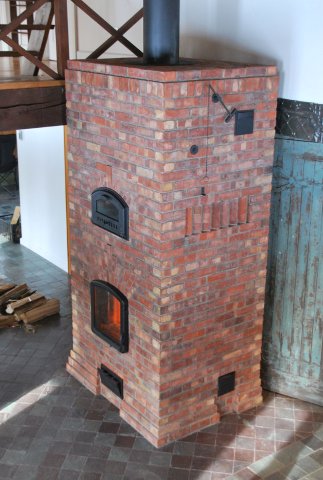Top Exit: Thermal Images
The following three thermal images track the heat transfer pattern from a single firing in a Swedish style top exit stove.
The images were taken of the facing over the side channels around the height of the soldier accordion relief band. The orientation of the stoves smoke path is illustrated in this article: Top Exit Construction Sequence
Note: The time and date on the images is incorrect and is not an actual chronological sequence.
The colours indicate the contrast in temperature, within the subject field.
The images are confusing to view as the contrast in temperature, and so colour spectrum, of each image, is different. For example, the last image, where the stove surface is actually hottest, has no red in it and so looks cooler than the preceding images, which are red in places, but less hot.
The figures at top left represent the temperature at the point of the cross hairs, and the maximum and minimum temperatures within the circle and box.
The specific colour spectrum for each image is represented at right margin.

Taken shortly after starting the fire from cold in the evening. The down channel can be seen to be considerably hotter than the up channel to its right, being hottest at the overflow from the upper chamber. The corners are still quite cool.
Note; the indentations of the relief band over the down channel are the hottest areas at this point in time, as they reduce the thickness of the facing.

Two hours after the fire has burnt out. The temperature of both up and down channels has had time to equalise.

The morning after. The stove has stabilized, there being little contrast within the colour spectrum i.e. the mass of the stove is generally at the same temperature.
Marcus Flynn
2019

